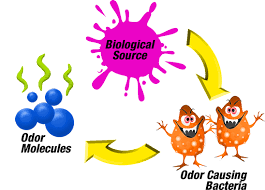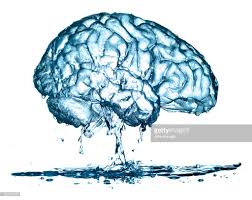 Have you ever walked on a sidewalk or in a parking lot and passed by a lift station or manhole and noticed a smell so bad you thought you were going to pass out?
Have you ever walked on a sidewalk or in a parking lot and passed by a lift station or manhole and noticed a smell so bad you thought you were going to pass out?
Most people who encounter these types of odors do not live in the world of designing and building odor-control treatment systems. For those of us who do we fully understand that when we encounter such a noxious smell it most likely needs an odor control system. It does not matter if the odorous smell is coming from an industrial water treatment process, food and beverage plant, wastewater plant, or from the off-gas of a “degasification process”. All of these types of industries and many more can generate odors and quite often these noxious odors must be addressed and treated because of either safety or public outcry. Many times odorous gases are generated as the result of processing and purifying drinking water. When water contains contaminants like hydrogen sulfide (H2S), carbon dioxide (CO2), or ammonia (NH3) there is a need to treat and remove these harmful elements from the water.
Odors come from many sources
When processing and purifying drinking water which requires pH adjustment by adding acid to lower the pH and allow for the removal of hydrogen sulfide (H2S) which will not convert at higher pH levels. After the pH level is properly adjusted the hydrogen sulfide can be removed by degasification. After the degasification process the pH will rise in the water from the removal of the carbon dioxide (CO2) and if the pH remains slightly acidic then caustic is normally injected into the water stream to raise the pH back up to a neutral level of 7. This entire required process to purify the water is what generates the odor and creates the requirement for an odor control scrubber. Odor control scrubbers may utilize chemicals such as acid and caustic to treat the air gas noxious odor or it may be a biological Scrubber that consumes the contaminants within the noxious gas air stream including ammonia and hydrogen sulfide. Noxious or corrosive odorous gases are not always from wastewater treatment plants or underground lift stations that are commonly referred to as “wet wells”. Quite often odors are generated during manufacturing or food processing as well as from the efforts just mention in a municipal water treatment and purifying plan. During the period of pH adjustment hydrogen sulfide (H2S) and other odorous substances can be released by means of Decarbonation or Degasification. Some odors have a pungent smell and other odors are harmful corrosive gases that must be contained to protect the surroundings or even human life. There are many types of odors and off gases that must be contained, captured, treated, or neutralized. Understanding the; who, what, where, and why, first will normally put you on the road to selecting the right solution for odor control.
When evaluating and designing the correct type of odor control system for a project there are several key items that should be considered before making a selection.
The first question is the “who”? Once you know where the source of the odorous gas is being generated from you begin to define the problem. As you begin to understand the source and whether it is being generated from a manufacturing process releasing ammonia, hydrogen sulfide, or acid fumes, or if it is from an industrial water treatment source, or even a water or wastewater process treatment facility utilizing degasification. Understanding these facts will begin to set the stage for your design direction and selection of an odor control system. The second question is “What” is the source of the odor problem? Knowing the exact source to verify and confirm your direction for a design selection or if there are any obstacles. Understanding where the odor is being generated within the wastewater plant process, a collection system, a lift station, an Industrial water process, or a food processing plant helps to define what you are up against as a design professional when selecting the right type of odor control process and equipment.
Sometimes Odor Control is needed because it is being generated as the result of another process.
It could be cleaning or purifying something as previously mentioned when discussing the process of water purification. The removal of hydrogen sulfide (H2S) from a water source at a treatment plant will often generate hydrogen sulfide (H2S) gas as a waste stream. The odor generated could be a direct result of a process located at a water treatment facility, a food and beverage process plant, or a semiconductor manufacturer that is utilizing a process referred to as reverse osmosis or membrane filtration which requires pH adjustment with acid and is often followed by the decarbonation process. understanding how decarbonation and degasification work will help you understand how these odors are generated. When utilizing a degasification process post filtration or a decarbonator the hydrogen sulfide (H2S) gases will be stripped and removed in the exhaust gas stream when the process water pH is correctly adjusted and this too will create an odor.
Understanding the “where” the source of the odor is the next step in the odor control selection process because, without a clear understanding of where the odor is being generated, you cannot begin to understand how you will capture the odors before you can select the best technology for the treatment. Remember that there are multiple odor control systems available ranging from chemical scrubbers to biological scrubbers and many types of suppliers and or sales representatives. The danger is that the sales representative may recommend what they are most familiar with but selecting the wrong type of process can be financially devastating for an owner and embarrassing for a design professional.
Which loosely translated means “just because the process works on paper make sure the cure is not worse than the solution”. Far too often I see an odor control scrubber that was selected for a project and problem and even though the science may work in theory the application is all wrong. An example would be when a sales representative or supplier sells an owner a solution like a biological scrubber for hydrogen sulfide (H2S) or Ammonia (NH3) problem at a lift station or a wastewater plant. Now on the surface, you might say what’s wrong with that choice? We all know that a biological scrubber works to remove hydrogen sulfide (H2S) gas so what’s wrong with the selection? Well, later the owner and normally the design professional or supplier discovers that the location generating the odorous gas has a wide swing in concentrations and it does it in a radical unpredictable manner. So, when the biological odor control scrubber has been working with a set load rate of hydrogen sulfide (H2S) all is good, and then wham! They get a surge and the concentrations spike by 400% and the gas blows right by the scrubber biological media untreated. Why you ask? Well, for the biological scrubber to work it is based upon bacterial colonies and their ability to break down the contaminant they have been acclimated to at a set level. Over time they can adjust to higher or lower rates but not instantly. This is a perfect example of “Just because you could, does not mean you should”.
If only the odor control scrubber had a brain

It could quickly detect and understand a change in conditions and make the necessary correction perhaps in advance to advert a downstream problem. At DeLoach Industries Inc we are developing “Artificial Intelligence” (AI) for our odor control scrubbers and our Degasification and Decarbonation systems to enable them to communicate autonomously and to react to their own needs by notifying either an operator or service provider or even another piece of equipment to correct or adjust to a problem or change in a condition such as an increase in Ammonia or Hydrogen Sulfide.
The final step in the process is documenting the concentration and consistency of the odor contaminates to be treated and select the type of process and the type of process and distribution system, media selection, and airflow requirements. Determining if the process will be a chemical scrubber or a biological scrubber or a more passive scrubber like carbon. All the variables should be looked at and understood including and sometimes most importantly who will operate the system and the level of training needed to operate the system. To learn more about industrial water treatment and the many ways to design, maintain and get the best efficiency from your system please visit our Industrial Water Treatment page. For more information or to learn more contact the professionals at DeLoach Industries Inc. at (941) 371-4995.





